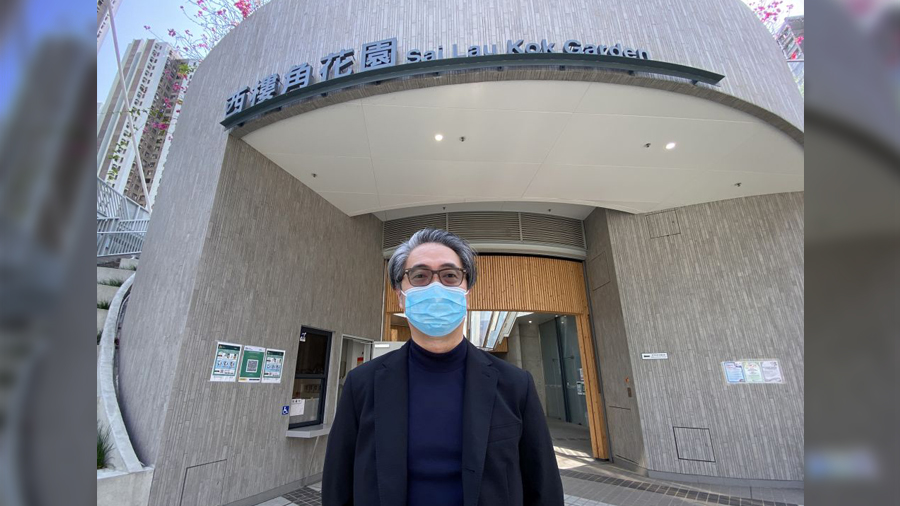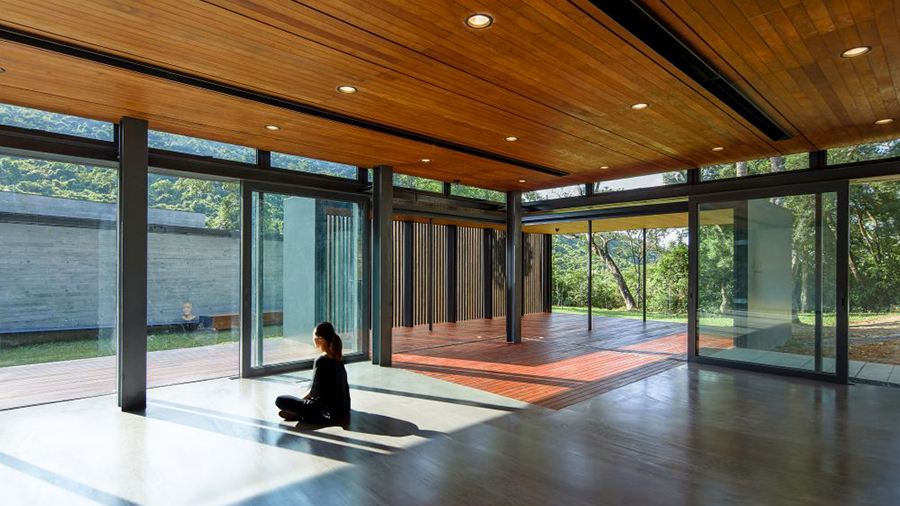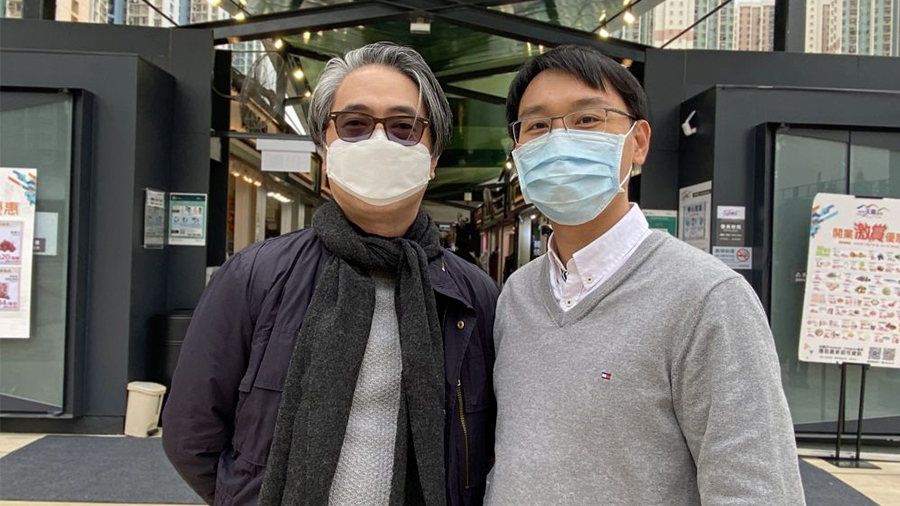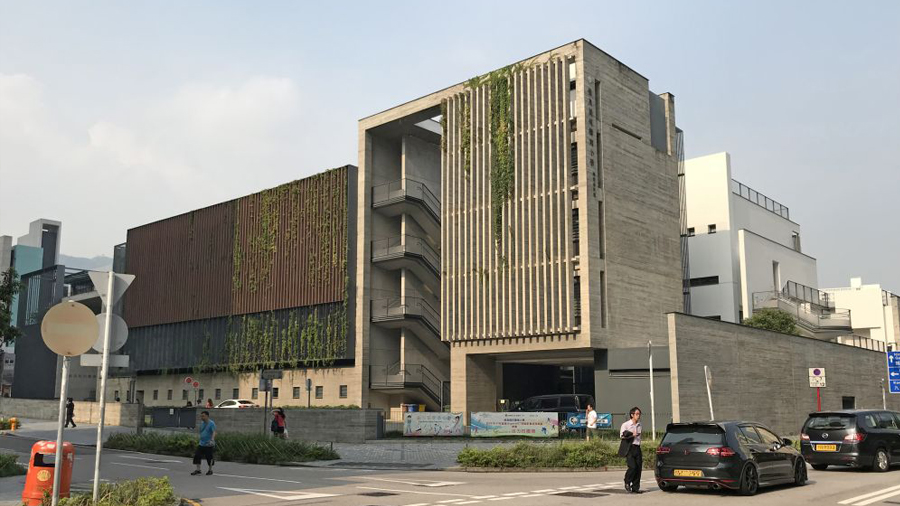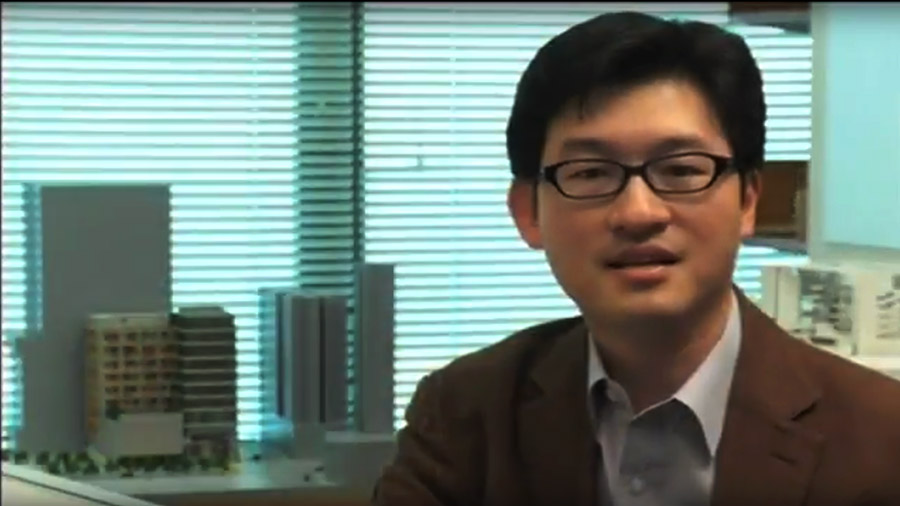#Design
Search Result: 5
Sai Lau Kok Garden after redevelopment
Hong Kong is a dense and compact city. A garden in the downtown area can no doubt offer people a quiet respite from the hustle and bustle of the city and promote healthy living. After redevelopment, the Sai Lau Kok Garden, located at the centre of Tsuen Wan, presents visitors with a refreshing and pleasant change both inside and outside. Staff members from the Architectural Services Department (ArchSD) explain how they gave the old-fashioned garden that used to sit at a corner a makeover by applying innovative design ideas, turning it into a popular recreational space for people.“Opening up” the hidden parkCommissioned in 1987, the Sai Lau Kok Garden occupies an area of 2 748 square metres. Despite its proximity to Tsuen Wan Mass Transit Railway (MTR) Station, its usage rate was relatively low due to the lack of same-level direct access from the MTR Station and the footbridge networks in the district. The redevelopment project began in November 2016. One of the project team’s main considerations was how to “open up” the garden which had been hidden among buildings to make it visible to the public again. According to Architect of the ArchSD, Mr Lo Yee-cheung, Adrian, before redevelopment, the garden, besides being surrounded by buildings, was enclosed on four sides by walls that were 2.5 metres tall. Taking the redevelopment opportunity, architects removed the walls and replaced them with greening barriers that are about 1 metre tall to separate the garden from neighbouring roads, creating a more open view and improving air ventilation in the community at the same time. “Raising” the garden to enhance accessibilityMoreover, when designing public open spaces, it is very important to consider the accessibility issue. To address the accessibility issue of the Sai Lau Kok Garden, the ArchSD has “raised” half of the garden’s area to turn it into a podium garden with connection to the footbridges in the district and direct access to the entrances/exits of the MTR Station to create a highly accessible network. One of the footbridges connecting the garden is a uniquely designed suspension footbridge that links up with existing footbridges on Castle Peak Road with direct access to a public transport interchange and bus terminus. Since the garden is split into an upper and a lower level, a number of staircases are built on both sides to facilitate public access. A special feature: inverted glass coneAfter redevelopment, the Sai Lau Kok Garden has changed quite a lot both inside and outside. Mr Adrian Lo tells us that since the local community had been requesting the provision of additional indoor venues at convenient locations for organising small- to medium-scale activities, a multi-purpose activity room and a covered multi-purpose venue were built to meet the needs of the community. Once you enter the interior space, you will see a skylight with special features in the shape of an inverted glass cone in the foyer. The inverted glass cone is the design highlight of the entire project, which not only facilitates natural ventilation and lighting but also brings the outdoor scenery to the interior space for an enhanced sense of spaciousness. Materials bringing out natural and gentle feelingFor material selection, the project team has used fair-faced concrete and traditional Chinese kiln-fired grey bricks as the main construction materials and decorated the interior walls and screens with wooden slats, bringing out the natural, gentle and comfortable feeling. Moreover, the interior’s high headroom design facilitates natural ventilation, thereby reducing the use of air-conditioning. Sunlight can also enter the premises through the glass and skylight, in turn reducing electricity consumption for illumination and enhancing the sense of indoor spaciousness. In addition, the facilities of the garden are meticulously designed by the project team. For example, handrails and seat backs are installed on the benches beside planters to assist the elderly in standing up and sitting down. An oasis in the downtown area of Tsuen Wan To mitigate the heat island effect is the main challenge in building design. The architects have introduced a green building design that incorporates green elements into the redevelopment project. For example, nets with climbing plants are set up at the garden centre to increase shaded areas. The elaborate overall planning also comprises the retention of 13 original trees of various species in the garden and the planting of shrubs and lawns to provide shade for the public and create an oasis in the downtown area of Tsuen Wan. Senior Architect of the ArchSD, Mr Tsang Wai-lun, says that after redevelopment, the Sai Lau Kok Garden not only provides comfortable space for leisure and activities but also injects new vibrancy into the community to serve as a good place for local residents to play, rest and get together. (The video is in Cantonese) (The video is provided by Development Bureau)
Architectural features of Hoi Ha Visitor Centre
Hoi Ha Visitor Centre in Sai Kung West Country Park is a building with many characteristic designs. The design concept of the centre originates from the layout of traditional villages and emphasises integration with nature, aiming to provide a leisurely and comfortable activity space for visitors.The Hoi Ha Visitor Centre is located within the country park and is surrounded by woods and beautiful scenery. The ArchSD’s Senior Project Manager, Mr Hui Lung-nin, Hilman, says that there is a country trail next to the centre leading to the nearby Hoi Ha Wan Marine Park, which has a rich array of marine life, and it only takes about 10 minutes’ walk. Besides, the centre comprises a multi-purpose room where exhibitions related to the marine park and other activities can be held. In front of it is a large lawn for visitors to picnic or idle away the time. Currently, the centre has already opened for public visits. Design concept originates from traditional villages’ layoutRegarding the architectural features, the ArchSD’s Senior Architect, Mr Lau Tin-hang, Peter, says the design concept of the team originates from the layout of traditional villages that are built with “site-specific” considerations. Different facilities are set according to terrains and site situations, as distinct from the previous practice where all facilities are placed in a block-shaped building. For example, the multi-purpose room, the caretakers’ office and the reception area are located on two sides of the site embracing the central lawn, while a covered corridor and a small courtyard are built behind the office. Different varieties of veranda and courtyard spaces are closely knitted together to reinterpret the atmosphere of an old traditional village with alleys traversing in between. Integrating nature and architectureAccording to Mr Peter Lau, when designing the visitor centre, architects have contemplated how to fit it into the beautiful natural surroundings for visitors to feel the environment of nature. For example, the layout of the visitor centre aims to circumvent the trees and preserve as many of them on-site as possible for visitors to have a picnic or a break in the shades. Moreover, the design strives to achieve transparency and brightness in order to bring natural views indoors. For example, the multi-purpose room is designed as a glass pavilion, inside which people can view the lawn outside. Also, after the glass door is slid open, the indoor and outdoor areas are connected to give visitors a sense of being surrounded by nature when viewing exhibitions or engaging in other activities indoors. Using materials that emanate a rustic and natural feelingThe use of materials also strives to be in keeping with nature as far as possible. Fair-faced concrete created by formworks with wood patterns is applied to the façades of the visitor centre to give it a rustic and natural feeling. The architects have mostly used wooden slats as screens, which can help lower indoor temperatures and enhance ventilation. The wooden flooring and ceiling also bring natural coolness to visitors. In addition, a number of sustainable development facilities have been introduced in the centre, including solar panels and solar bollard lights to contribute to serving the centre’s electricity needs; a rainwater collection and recycling system to reduce the wastage of water; a bio-treatment plant system to treat sewage produced locally; and drinking fountains for the use of the public.The public and visitors can go on outings at their leisure and admire the natural beauty unique to Hong Kong. At the same time, people can feel how careful and thoughtful our architects have been in designing the outdoor recreational facilities for all. (The video is in Cantonese) (The video is provided by Development Bureau)
The FEHD Skylight Market is designed with heart (by the Architectural Services Department)
The FEHD Skylight Market located in Tin Shui Wai (formerly known as Tin Shui Wai Temporary Public Market) was opened recently, providing residents with a pleasant shopping environment of fresh food provisions. The project took only about a year from planning, funding approval, construction to commissioning, enabling the public and tenants to benefit from it early. Staff members from the Architectural Services Department (ArchSD) are here to talk about how they have completed the project rapidly and share with us the architectural design features of the market.Building a temporary public market for the convenience of residentsIt was announced in The Chief Executive’s 2018 Policy Address that the Government planned to spare space at the section of Tin Fuk Road next to Tin Shui Wai MTR Station for building a new public market. Considering that it would usually take six to seven years to build a permanent public market, the Government announced in October 2019 that a temporary public market would be built at the open space of Tin Sau Road Park so that the public could have an additional option for purchasing fresh food before the completion of the new public market. Construction started at the outbreak of the epidemicSenior Project Manager of the ArchSD, Mr Chan King-tak, Alfred, says that to expedite the completion of the FEHD Skylight Market, government departments collaborated in various aspects, including the coordination over the layout arrangement of the market and tackling of technical and environmental difficulties, so as to meet the operational needs of the Market. When the contractor commenced the construction in January last year, it was at a time that coincided with the first wave of the outbreak of COVID-19. Construction materials were in short supply due to temporary closure of factories in Mainland China. The project team responded promptly and rearranged the construction procedures flexibly while the contractor liaised closely with suppliers for contingency measures. He says he is grateful to have such an efficient team that could complete the project within a designated period despite the pandemic. Completion for commissioning in about a yearRegarding the construction, Senior Architect of the ArchSD, Mr Tsang Wai-lun, says that a market usually takes about six to seven years from planning to completion. However, to cope with the community demand for a public market to be completed as soon as possible, the department adopted Modular Integrated Construction (MiC) to have most of the modules prefabricated in a factory before their transportation to the site for installation. For the main canopy, Design for Manufacture and Assembly (DfMA) was applied to avoid wet trades with cement on-site. An up-stand foundation design was adopted to minimise excavation, reduce construction time and facilitate construction. As a result, the market took only a year for completion and commissioning. Meticulous architectural designThe project team has been meticulous in the design. Architect of the ArchSD, Mr Lo Yee-cheung, Adrian, tells us that with an aim to strike a balance among aesthetics, functionality and comfort, the design focused on natural ventilation and lighting. The high headroom central corridor with openings on its two sides allow daylight to enter the market. Not only can it reduce energy consumption of lighting but can also block direct sunlight for better comfort of users. Besides, the linear layout of the market promotes cross ventilation and brings coolness and comfort. The pitched roof design copes with the rainy weather in Hong Kong and is good for draining.Creating more entrances/exits to enhance accessibilityWith 36 fixed stalls and four temporary stalls, the Skylight Market offers 40 stalls in total. The market has wide pedestrian passages and provides barrier-free facilities. Besides the main entrances/exits located on the east and west sides of the market, there are four secondary entrances/exits to facilitate access from the park, nearby residential buildings or transportation nodes. Greening and benches are provided on both sides of the building for the public especially the elderly to take a rest after shopping. The soft wood tone of the market and the theme colours of the ceiling – blue, orange and green, echo with the fresh food sold by the stalls. Bringing technology into the communityFurthermore, to help the public feel at ease shopping at the market amid the epidemic, the project team has specially introduced new technologies in collaboration with the Nano and Advanced Materials Institute (NAMI) and innovation and technology companies of the Hong Kong Science Park. For example, anti-fouling and anti-bacterial ceramic panels have been installed between stalls, “nano-coating” technology has been applied to ventilation areas to reduce dust accumulation, and smart litter recycling machines have also been installed. Other than bringing technology into the community, the market has, by providing a testing ground, also helped promote the development of innovative technologies in Hong Kong.Popular with tenants and residentsThe market has been running smoothly since its opening. Miss Lam, a vegetable vendor of the market, says that the market has the most customers from 3 p.m. to 6 p.m. every day. The comfortable environment of the market has attracted many local residents to visit it. After doing business for a week, she already has many regular customers. Mr Chan, a vendor selling dry goods (figures), says that as the market is clean and tidy, parents would shop at the market with their children. His stall started running during the Christmas holidays, so business was quite good. Mrs Leung, a local resident, says that as the market has a good variety of goods and is at a convenient location, she will come shopping again for daily necessities. Markets are one of the main outlets where residents purchase fresh food. Leading the project team, colleagues from the ArchSD have overcome difficulties and challenges brought about by the epidemic to give the market a good design. Also, by collaborating whole-heartedly with various departments, they have completed the project within a short time to provide convenience for members of the public. (The video is in Cantonese) (The video is provided by Development Bureau)
A comfortable learning environment is crucial to the development of our students, and a people-oriented school design would create a pleasant atmosphere that encourages exploration and interaction among children on the campus. Here we will take you on a tour of the Po Leung Kuk Stanley Ho Sau Nan Primary School, another project undertaken by the Architectural Services Department (ArchSD) in the Kai Tak Development Area (KTDA), to learn more about the effort put into the project, from planning, design to completion. We will also see how architects have thought out of the box and worked hard to create an ideal campus for the students.Unlike the traditional school buildings, the Po Leung Kuk Stanley Ho Sau Nan Primary School adopts a low-rise 4-storey design, with the basketball court “innovatively” accommodated on the first floor in the middle of the school campus, thus creating a focal point that brings students, classrooms and outdoor spaces all together. In keeping with the concept of sustainable development of the KTDA, the campus has incorporated many green elements. For example, the facades are built with fair-faced concrete to reduce the need for extra finishing materials, and vertical greening is supported by timber and metal screen panels and sunshades to lessen the electricity burden for air-conditioning and create a natural and comfortable setting for the campus. Site-specific design approach Integration into the communityAs the school is surrounded by residential blocks and highways nearby, the design team has adopted a site-specific design approach to make good use of the surrounding environment. There is a small square outside the school entrance that can be used as a waiting area for parents to pick up and drop off their children. In addition, the architects have used low fence walls instead of high walls to remove the sense of isolation of the campus from the outside. With a higher level of visual permeability, the school can integrate better into the community. Furthermore, in terms of layout, the school and its neighbouring SKH Holy Cross Primary School have been setback from the tall buildings across the road in order to create a sense of spaciousness, facilitate ventilation and help reduce the impact of road traffic noise. As the two schools are separated only by plants, this cleverly designed communal garden can serve to strengthen their connections.Ingenious layout Connectivity between spatial areasThe Director of Architectural Services, Mrs LAM YU Ka-wai, Sylvia, pointed out that the design team had maintained close communication and interaction with the school when designing the campus in the hope of creating an ideal school environment together. I know that the campus has been built using the design concept of traditional walled villages. Colleagues told me that while a walled village has an ancestral hall and a study hall, the school has an assembly hall, a library and classrooms , all of which housed in three building blocks surrounding the ball court in the centre and linked up together using corridors, gardens and link bridges. The stairs lead to various spatial areas and connect the many functional spaces to one another. All these arrangements can shorten distances, encourage interaction and create an atmosphere of a small community within the school campus. Substantial greening Building with heartThe greening ratio of the school reaches 30% with green terraces and roofs on various levels. On the day of our visit, several students told us that their favourite place in school is the library with its luxuriant lawn outside exuding an air of tranquility. The floor-to-ceiling glass panels at the entrance of the library are another distinctive feature, which, according to the design team, is intended to link up the indoor and outdoor spaces. This not only brings the natural landscape into the library for an enhanced sense of visual permeability and spaciousness, but also takes school activities outdoors for expanded learning spaces. Students can pick up a book and go outside to sit on the lawn, which makes their reading experience more pleasurable.Regarding construction materials, the school uses metal frames, timber screen panels and steel fences to create a variety of spatial areas with different levels of visual permeability. Large-sized floor-to-ceiling glass panels are used for classroom windows on all floors to let in more daylight and increase the sense of spaciousness. Green plants such as bamboo are specially planted outside some classroom windows not only to function as screens and provide shelter from the scorching sun, but also, according to the school principal, Ms KAM Yim-mui, to create a serene, relaxed and cultural environment on the campus to help cultivate students’ moral character. (The video is broadcasted in Cantonese) (The video is provided by Development Bureau)
In addition to the exterior, space and functions of a building, harmony with the surrounding environment and compliance with relevant building regulations are also part and parcel of the equation. Hence various fields of expertise, including aesthetics, engineering, management and law, are brought to bear by the Architect throughout the entire process. The use of innovative softwares, e.g., 3D interior design programmes, has greatly facilitated the work of an Architect. To be an Architect, one should be gifted at drawing and able to draw one’s architectural designs. Moreover, one should have a deep understanding of the surrounding environment and cultural matters, sensitivity to space and colours, and creativity in order to design buildings for better living. Organisation chart






